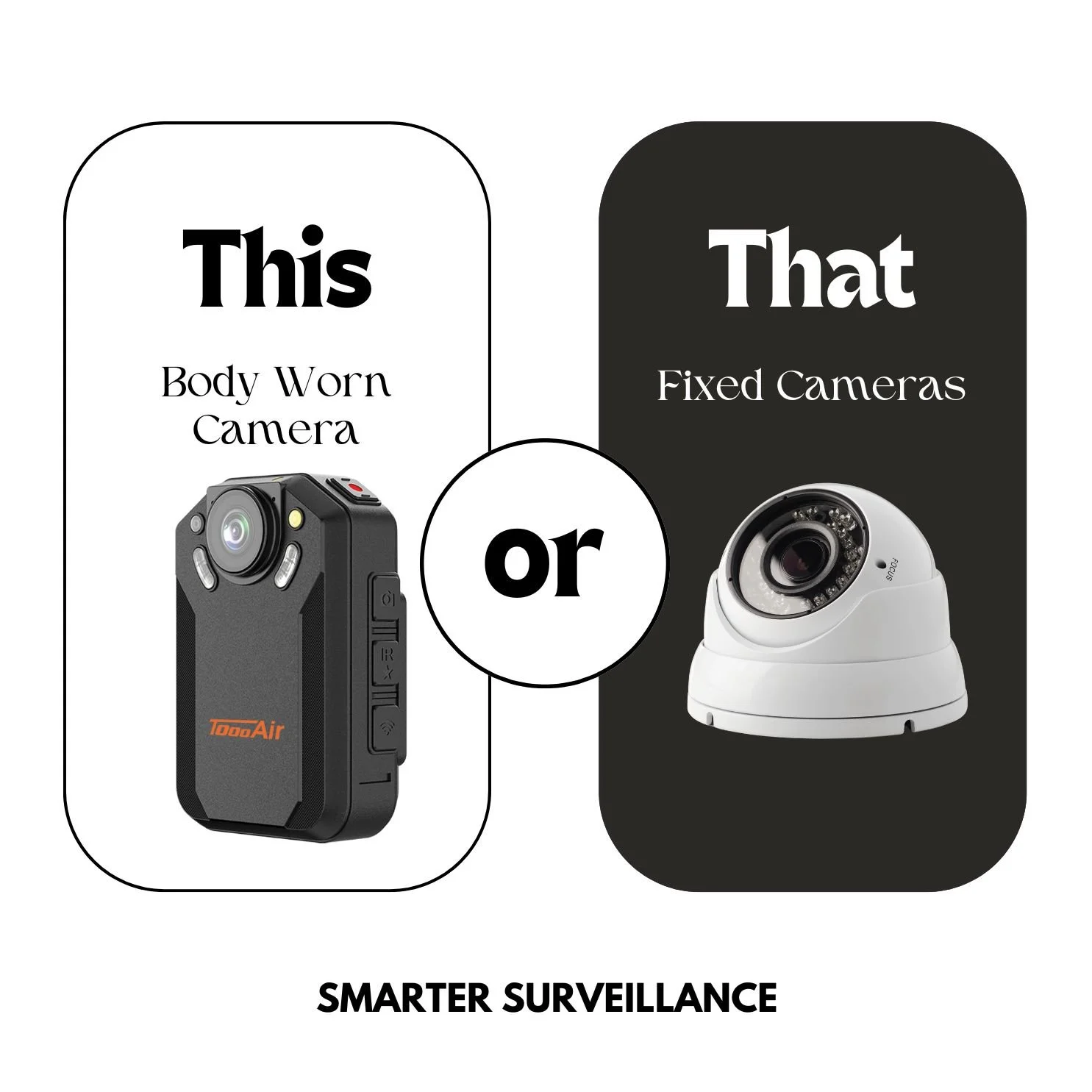Why Body-Worn Cameras Beat Fixed Cameras Used Alone
First-person evidence, not a guess
Body-worn cameras ride with the person closest to the event. You get what they saw and heard, at eye level, rather than a distant overview—useful for resolving disputes and reviews. Modern units capture Full HD 1080p with shift-long reliability, so clarity doesn’t drop when people move.
The crucial lead-in: pre-record buffers
Incidents don’t begin at the moment “record” is pressed. Pre-/post-record preserves the seconds around the trigger, locking in the before/after context that static viewpoints miss.
Multi-angle without infrastructure
Dynamic situations need more than one angle. Peer-assisted recording allows nearby body-cams to capture the same event together—synchronised perspectives, no extra fixed installs.
Picture + sound + location
Disputes often hinge on tone, warnings, compliance—and audio clarifies what was said. Add GPS metadata for where and when, and you get a tighter timeline and easier retrieval later.
Built for full shifts
Evidence isn’t evidence if the battery dies. Enterprise models are designed for long battery life and full-shift coverage, backed by docks and software to move footage reliably.
Live when it matters
Most recordings are reviewed after the fact. But when real-time support helps, live streaming over Wi-Fi/LTE brings supervisors into the scene without sending more people to site.
Evidence you can stand behind
From capture to hand-off, integrity matters. Secure file encryption and audit trails protect footage and build confidence with legal, compliance, and risk teams.
Form factors people actually wear
Adoption rises when devices are light, discreet, and comfortable—think compact or badge-style options for customer-facing roles. Consistent wear = consistent evidence.
FAQ’s:
Are body-worn cameras helpful in low-light?
Yes. Look for models with strong low-light performance and IR options so footage holds up on night shifts and indoors.
Do they work across different sites and teams?
Yes. Body-cams move with people, so they cover changing layouts, events, and shifts without re-engineering a space—useful across security, hospitality, retail, and councils.
What about remote management and getting footage off the device?
Enterprise platforms support remote device management and obtaining footage in the field (e.g., over LTE), which reduces delays in incident review. (See V500 notes.)

